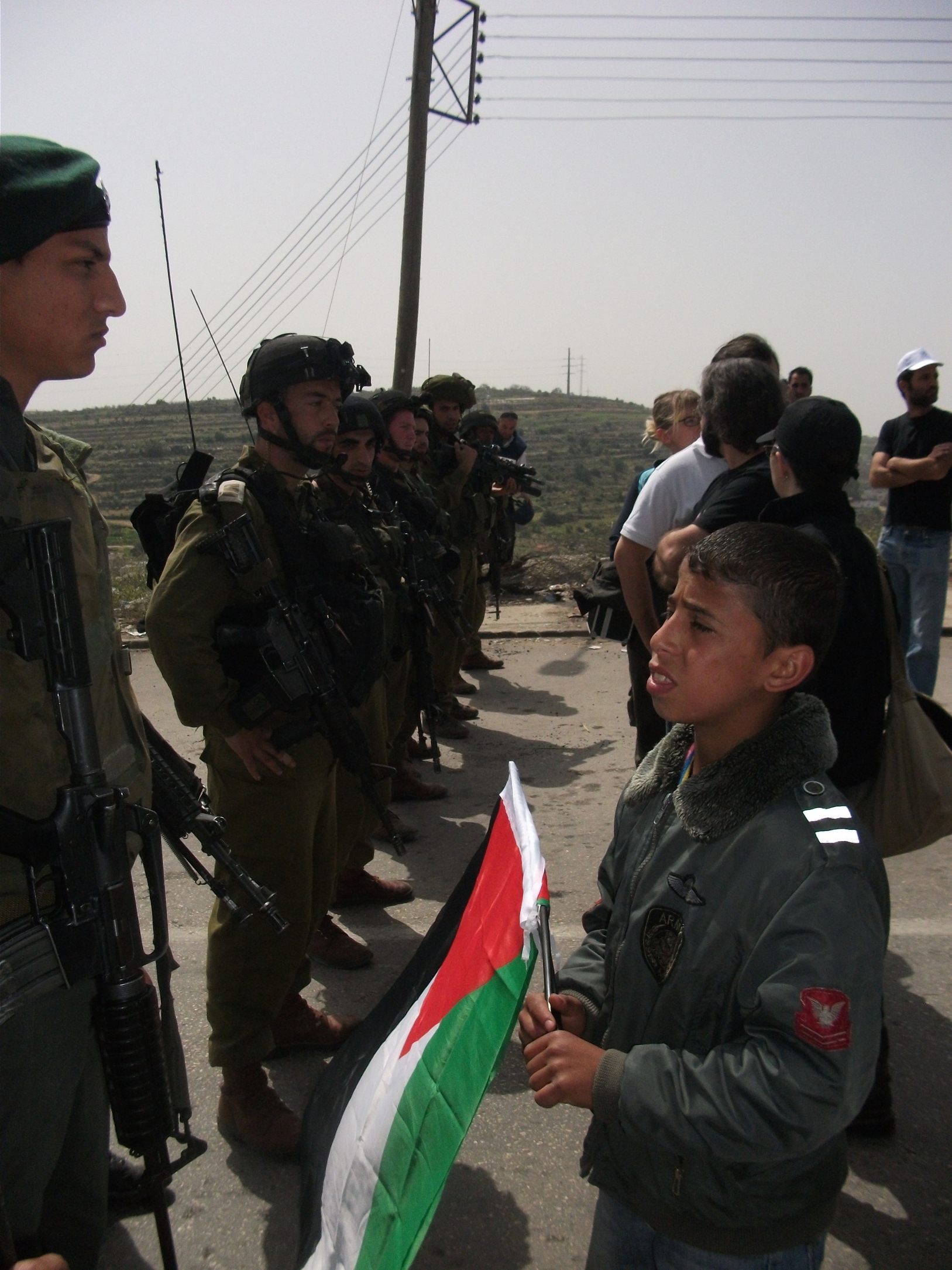Tag: Demonstration
-
Man shot with live ammunition during protest for Vittorio
15 April 2011 | Popular Struggle Coordination Committee Bilin Protester Shot with Live Ammunition by Sniper The protester, a 35 year old resident of the village was hit in his shoulder and foot by 0.22 mm live bullets shot at him by a sniper during a protest in memory of Vittorio Arrigoni, murdered last night…
-
Army uses disproportionate force against small demonstration in Beit Ommar
02 April 2011 | International Solidarity Movement Today, small peaceful demonstrations in Beit Ommar were met with disproportionate force by the Israeli army. Just after 11 o’clock this morning, a small group of villagers and internationals marched to the entrance of the village where they were met by lines of soldiers preventing them from exiting…
-
Many injured and several detained at al-Shuhada street demonstration
26 February 2011 | International Solidarity Movement Hundreds gathered in Hebron on Friday to march against the continued closure of al-Shuhada Street. The non-violent protestors were met with tear gas, sound grenades, and rubber bullets from the Israeli army. Witnesses also said that the army fired tear gas canisters directly at the protestors, which is…

